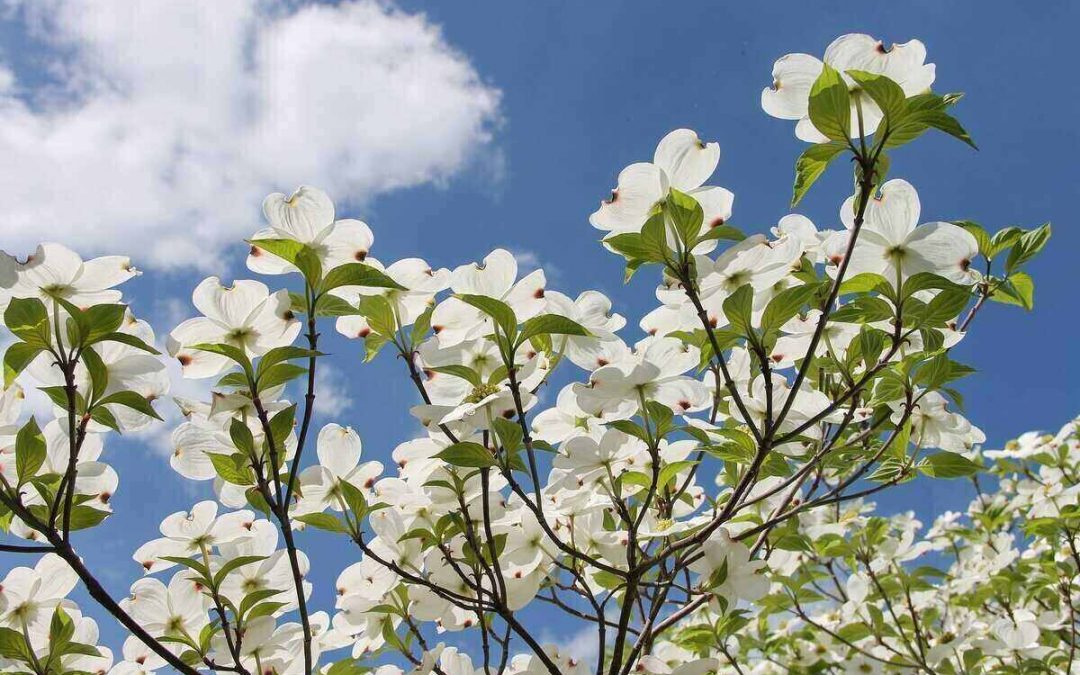Birmingham is a southern hub for music, art, and history and home to some of Alabama’s most desirable native plants. Many homeowners prefer native vegetation because it’s low-maintenance and beneficial to the ecosystem. In addition, native plants attract more birds and butterflies. But the best native plants for Birmingham are also favored for their beauty and utility.
In this article
- Oakleaf Hydrangea
- Southern Sugar Maple
- Wavyleaf Purple Coneflower
- Largeflower Tickseed
- Flowering Dogwood
- Pussytoes
- American Chestnut
- Yellow Honeysuckle
- How to Choose Native Plants for Your Birmingham Landscape
- FAQ About Native Birmingham Plants
- Where to Find Native Plants in Birmingham
8 Best Native Plants for Birmingham
1. Oakleaf Hydrangea (Hydrangea quercifolia W. Bartram)
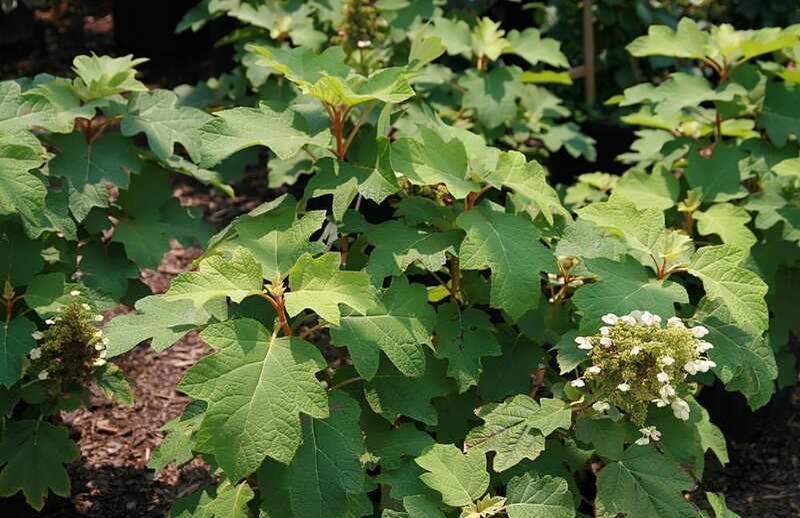
Photo Credit: David J. Stang / Wikimedia Commons / CC BY-SA 4.0
Alabama’s beloved oakleaf hydrangea has been the state’s wildflower since 1999. Its white flowers bloom in the spring, then turn rose in the summer. Come fall, the native shrub’s green oak-shaped leaves turn a beautiful deep burgundy, and its flowers remain until mid-winter.
Oakleaf hydrangea grows quickly, attracting deer and pollinators. It resists most pests but may get an occasional spider or aphid. Overall, the shrub is attractive and easy to care for.
Plant type: Shrub
USDA Hardiness Zone: 5 to 9
Sun: Partial to full shade
Soil: Fertile, moist, well-drained
Duration: Perennial
Foliage: Deciduous
Fragrance: Honey-vanilla
Bloom time: Springa
Water needs: At least 1 inch a week
Mature height: 6 to 8 feet
Potential hazards: They resist pests, but sometimes get spiders or aphids and they are susceptible to leaf bright or powdery mildew.
Maintenance needs: Low-maintenance, only prune if the plant gets damaged or becomes overgrown. You may remove dead flowers.
2. Southern Sugar Maple (Acer floridanum)
The southern sugar maple makes an attractive street-side, specimen, or woodland tree. Its green leaves create a symmetrical oval that turns deep shades of yellow, orange, and red, making a spectacular fall display. Then, in early spring, the ends of its branches bloom clusters of small yellow-green flowers.
It has a strong bark that resists breakage, but sometimes it develops shallow roots. Thus, it’s best to avoid mowing the grass beneath them. Although it is too small to produce maple syrup commercially, southern sugar maple syrup isn’t any less delicious than its commercial competitors.
Plant type: Tree
USDA Hardiness Zone: 6 to 9
Sun: Full sun to deep shade
Soil: Clay, loam, sand (prefers rich loamy soil)
Duration: Perennial
Foliage: Deciduous
Fragrance: Sweet and sometimes spicey, almond or cherry scent
Bloom time: Early spring
Water needs: Medium, High drought-tolerance
Mature height: 20 to 70 feet
Potential hazards: They can attract aphids, borders, and scale insects and are susceptible to diseases including leaf spot, tar spot, and verticillium wilt.
Maintenance needs: Low-maintenance, only prune if necessary and only water in times of drought.
3. Wavyleaf Purple Coneflower (Echinacea simulata)
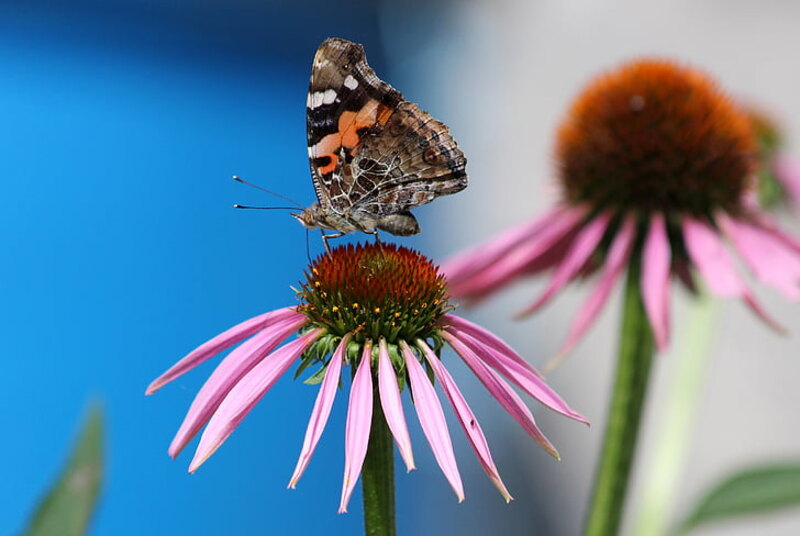
Photo Credit: PickPik
Wavyleaf purple coneflowers have showy pink and purple flowers that bloom in the spring and summer. Known for their beauty, the flowers feature long drooping petals with a dark center. Many gardeners use its freshly cut flowers in bouquets or dry the flowers to make tea.
This native herb is a top pick for wildlife lovers. Its sweet nectar attracts butterflies, bumble bees, and other pollinators, while its fruit seeds attract various birds. Although wavyleaf purple coneflowers aren’t prone to insect damage or disease, they may attract the Japanese beetle and they occasionally get infected by leaf spot.
Plant type: Herb
USDA Hardiness Zone: 5 to 8
Sun: Full sun to partial shade
Soil: Well-drained, calcareous, loam
Duration: Perennial
Foliage: Deciduous
Fragrance: Light and sweet
Bloom time: June – August
Water needs: Medium
Mature height: 2 to 3 feet
Potential hazards: Occasionally gets leaf spot and may attract the Japanese beetle.
Maintenance needs: Separate clumps when overcrowding occurs. Removing dead flowers isn’t required, but improves the plant’s appearance.
4. Largeflower Tickseed (Coreopsis grandiflora)
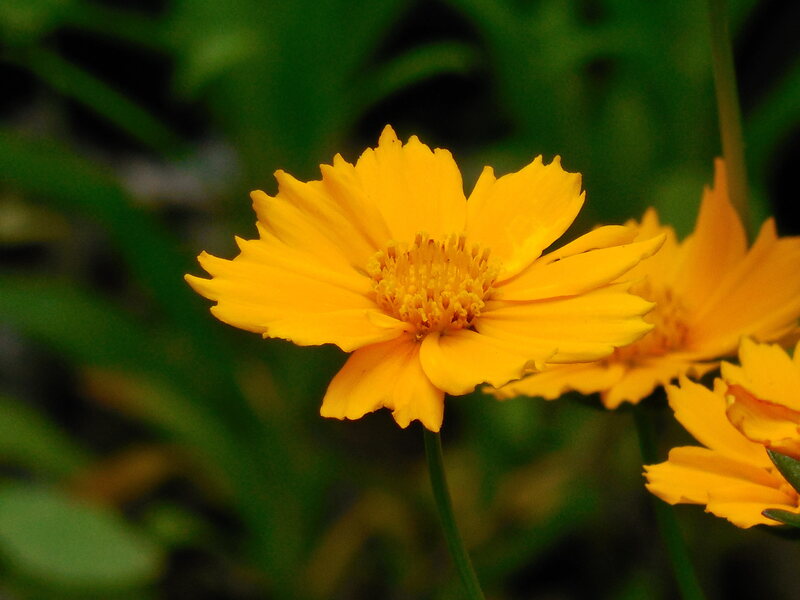
Photo Credit: Pxfuel
Due to its beautiful bright yellow flowers, largeflower tickseed is common in Birmingham’s butterfly, rock, and wildflower gardens. In wildflower gardens, they are a delightful companion to wavyleaf purple coneflowers or black-eyed Susans.
Because butterflies, bumble bees, and hummingbirds love its nectar, largeflower tickseed is great for Biringham’s ecosystem. It is also the perfect plant for homeowners with small children or pets because it’s entirely non-toxic. Additionally, it’s low-maintenance, requiring minimal care.
Plant type: Herb
USDA Hardiness Zone: 4 to 9
Sun: Full sun
Soil: Well-drained, sand, loam, clay
Duration: Perennial, biennial
Foliage: Semi-deciduous
Fragrance: Sweet, spicey
Bloom time: Summer and fall
Water needs: Drought tolerant, 1 inch per week
Mature height: 1.5 to 2.5 feet
Potential hazards: Some people are allergic to tickseed. They are susceptible to fungal diseases such as powdery mildew. They may attract aphids, aster leafhoppers, or coreopsis beetles.
Maintenance needs: Low-maintenance, fertilize and deadhead to encourage robust blooms.
5. Flowering Dogwood (Cornus florida)
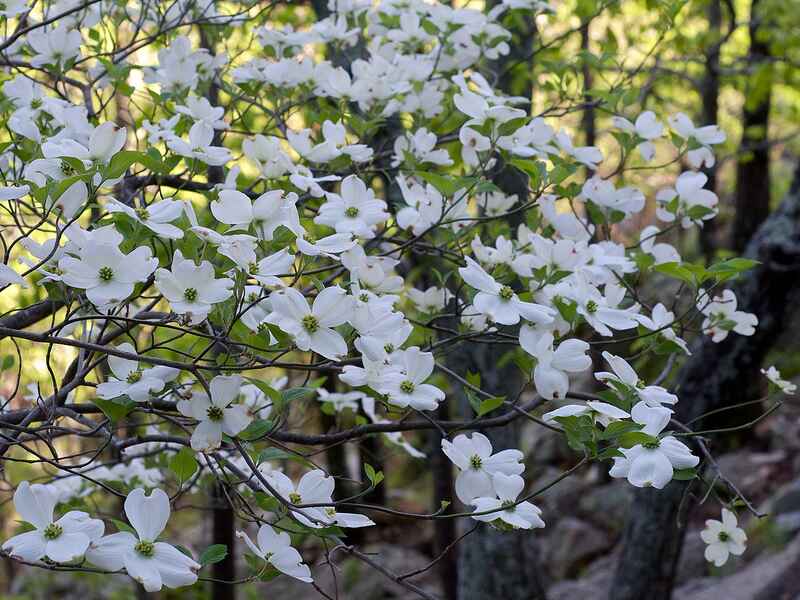
Photo Credit: Eric Hunt / Wikimedia Commons / CC BY-SA 4.0
The flowering dogwood is one of North America’s most attractive native trees. In early spring, it blooms small yellow-green flowers surrounded by magnificent pink and white petal-like leaves. When the weather cools, its breathtaking fall foliage includes bright red, scarlet, and purple leaves above its uniquely patterned trunk.
However, the flowering dogwood isn’t just coveted for its looks. You can use its hardwood to make household tools such as rakes and butcher blocks and its roots to make red dye. It’s also great for local wildlife, attracting birds and butterflies.
Plant type: Tree
USDA Hardiness Zone: 5-9
Sun: Partial shade
Soil: Organically rich, moist, acidic soil
Duration: Perennial
Foliage: Deciduous
Fragrance: Sweet floral
Bloom time: Early spring
Water needs: Low
Mature height: 15 – 30 feet, but can be up to 65 feet
Potential hazards: Contact with its berries give some people rashes. It is susceptible to fungal diseases including powdery mildew and spot anthracnose.
Maintenance needs: Prune in early spring and fertilize during spring and fall.
6. Pussytoes (Antennaria Gaertn.)
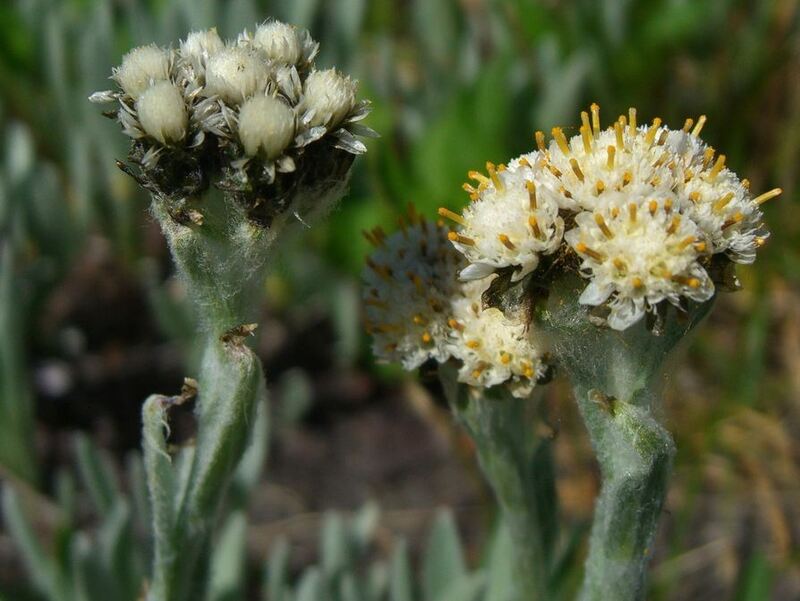
Photo Credit: Jason Hollinger / Flickr / CC BY 2.0
Consider pussytoes if you’re looking for natural ground cover for a rock garden or pathway. The herb sprouts pollinator-friendly white and pink flowers in early spring. However, pussytoes don’t attract many pests and are left alone by most herbivores, including rabbits and deer. Although pussytoes resist most diseases, they may get root rot if overwatered.
Plant type: Herb
USDA Hardiness Zone: 3 to 8
Sun: Full sun
Soil: Well-drained
Duration: Perennial
Foliage: Semi-evergreen
Fragrance: None
Bloom time: April – June
Water needs: Dry to medium, Drought tolerant
Mature height: 3 to 9 inches
Potential hazards: If the soil is too moist, it can get root rot. You may get an allergic reaction if you are sensitive to ragweed, daisies, and marigolds.
Maintenance needs: Low-maintenance, removing dead flower heads will improve the plant’s appearance.
7. American Chestnut (Castanea dentata)
The American chestnut tree is a fast-growing, fruit-bearing tree with edible nuts. Although this native-American tree was once common, its population has dwindled since the introduction of the Chinese chestnut tree. When the Chinese chestnut tree came to North America, it brought a fungal disease called chestnut blight, killing billions of American chestnuts.
Although mature American chestnuts are almost extinct, several new seedlings flourish in Jefferson and Shelby. For centuries, indigenous people used its hardwood for building, its nuts for eating, and its leaves and bark for medicine.
Plant type: Tree
USDA Hardiness Zone: 4 to 9
Sun: Full sun for nut production, but they grow fastest with 30% shade
Soil: Well-drained and acidic sandy or loamy soil
Duration: Perennial
Foliage: Deciduous
Fragrance: Organic
Bloom time: June
Water needs: Drought-tolerant, but they benefit from weekly to bi-weekly watering in times of drought
Mature height: 100 to 120 feet
Potential hazards: Although they are non-toxic, its berries contain berberine which is known to cause stomach aches. It is susceptible to chestnut blight.
Maintenance needs: Remove damaged branches and portions that become infected by disease. Winter and summer are the best times to prune.
8. Yellow Honeysuckle (Lonicera flava Sims)
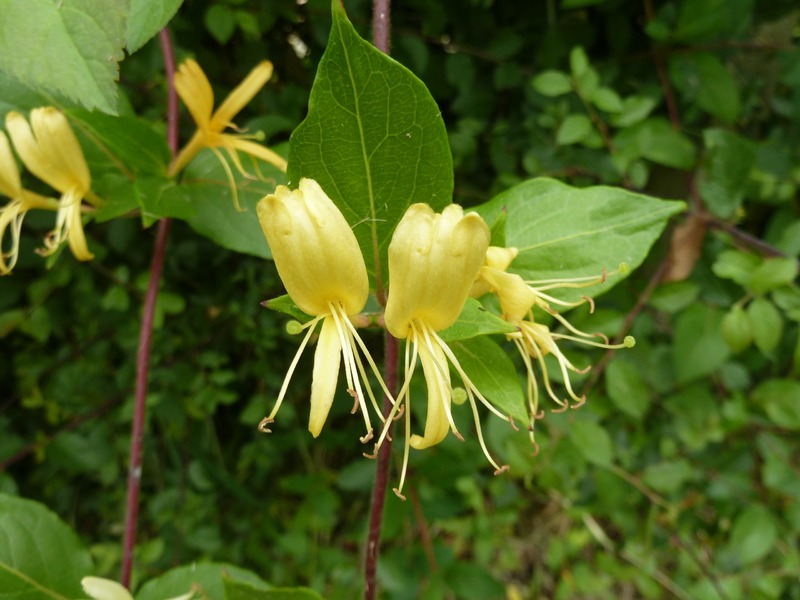
Photo Credit: PxHere
Yellow honeysuckle is a native vine with showy sweet-smelling flowers that attract butterflies and hummingbirds. Its orange and red berries are harmful to humans but a welcome treat to many birds, including songbirds and robins. Additionally, it attracts many small mammals.
This sometimes shrub-like climbing vine is often displayed on trellises, fences, and in bird gardens. In addition, yellow honeysuckle makes an attractive ground cover.
Plant type: Vine
USDA Hardiness Zone: 5 to 8
Sun: Full sun to partial shade
Soil: Moist, well-drained clay, loam, sand
Duration: Perennial
Foliage: Deciduous
Fragrance: Sweet
Bloom time: May – June
Water needs: Medium
Mature height: 10 to 20 feet
Potential hazards: Its berries are mildly poisonous.
Maintenance needs: Bark mulch helps to keep the soil moist and weed-free, and applying compost and organic fertilizer in the spring keeps it healthy. Prune yellow honeysuckle each year, around summer, to inspire growth.
How to Choose Native Plants for Your Birmingham Landscape
When choosing Alabamian native plants, please consider the following:
- Sun exposure: Before selecting a plant, ensure your yard has enough sunlight for the plant species to thrive. If you have many trees, consider plants that prefer shade.
- Required maintenance: Some plants require a lot of work to flourish. Thankfully, most native plants are low-maintenance, but some are essentially maintenance-free.
- Wildlife: Native plants tend to attract native wildlife. If you like birds, choose varieties that support local birds. If you’re growing a butterfly garden, choose from Alabama’s pollinator-friendly native flowers.
- Toxicity: If you have small children or pets, avoiding poisonous plants is best.
- Landscape design: Choose plant styles, colors, and proportions that compliment your landscape.
FAQ About Native Birmingham Plants
Native plants naturally grow and evolve in Birmingham, and there is typically evidence that they were here before European colonization. They are a fantastic low-maintenance landscaping Idea for Birmingham that also helps support the local ecosystem.
Pollinators like nectar producing native plants, including:
• Hydrangeas
• Coneflowers
• Tickseed
• Flowering Dogwood
• Pussytoes
• Honeysuckle
• Buttercups
• Sunflowers
Not all foreign plants are invasive. Invasive plants have the following qualities:
• Well adapted to the climate
• Quickly spreads
• Harmful to native plants and wildlife
Birmingham’s most poisonous native plants include:
• Eastern poison ivy
• Poison oak
• Hemlock
The best grass types for Birmingham are warm-season grasses including:
• Bermudagrass
• Zoysiagrass
• Bahiagrass
• Centipedegrass
Where to Find Native Plants in Birmingham
You can purchase Alabama native plants at the following shops:
- Oak Street Garden Shop in Birmingham
- Hanna’s Garden Shop in Birmingham
- Wildflower in Wilsonville
- White City Nursery, U.S. Alliance, Coosa Pines Corp. in Verbena
And you can view native plants at the following nature preserves and gardens:
- Ruffner Mountain Nature Preserve
- Birmingham Botanical Gardens
- Turkey Creek Nature Preserve
In addition, Birmingham Botanical Gardens has a native seed exchange program for its members.
If you need help planning a native plant garden, consider hiring a landscaper. Experienced lawn care pros in Birmingham can help you maintain a lush lawn and flourishing garden beds. Instead of burdening yourself with lawn work, take that time to visit the McWane Science Center or take a stroll through Railroad Park.
Main Photo by: Pixabay

